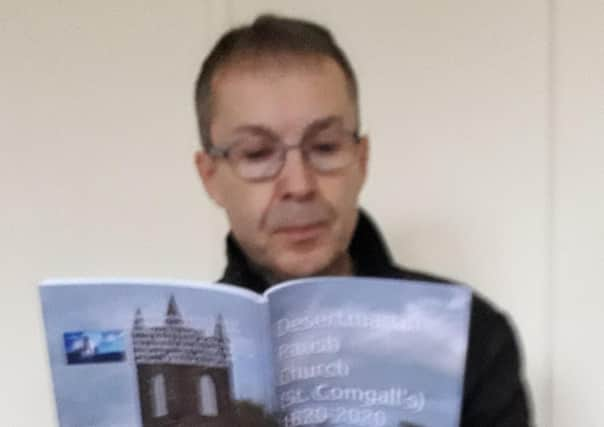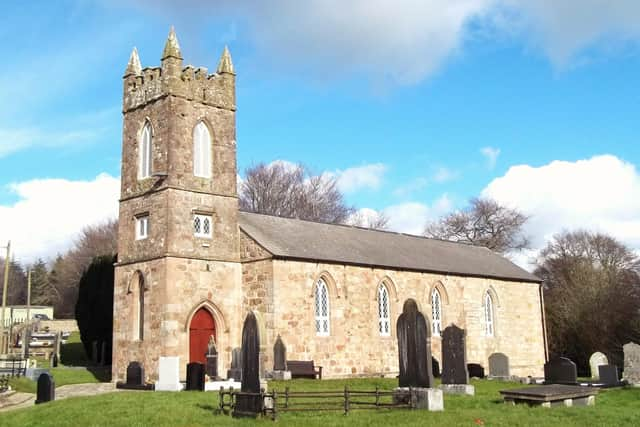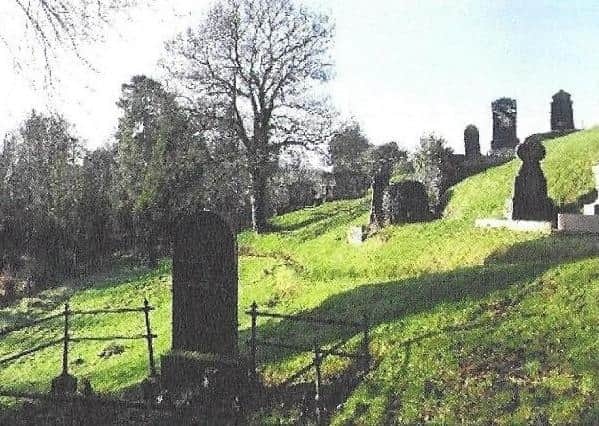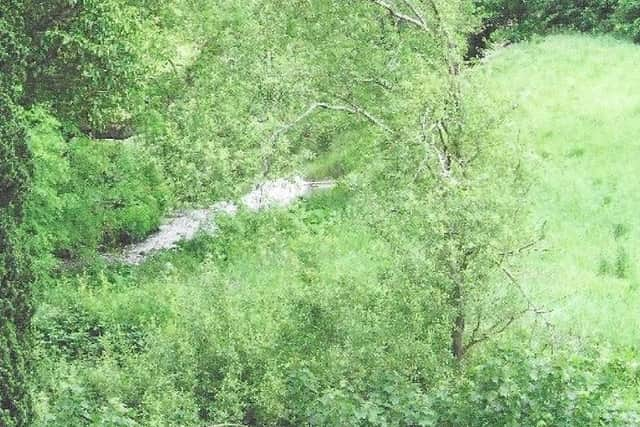A two hundred year old church expresses its feelings in poetry


It should have been the year that parishioners celebrated the 200th anniversary of the opening of the current church building, but as Honorary Church Secretary Sam Hudson sadly told us “the Select Vestry had a series of events planned but Covid-19 put paid to all of those.”
However, John Woodward, one of the churchwardens, marked the historic anniversary by penning a 69-page book of poems and reflections during lockdown.
Advertisement
Hide AdAdvertisement
Hide AdNamed after the Parish, and subtitled ‘St Comgall’s, From Then to Now!’ the book is vividly illustrated with photographs.


Sam shared a little of the Parish’s long and fascinating history here, along with some of John’s substantial collection of poems, and more of the former in a moment.
But first, one of John’s poems that was a little too long for last year’s very busy page, which also carried a report about a local history exhibition on Bangor’s coastal pathway.
The poem is simply and succinctly entitled ‘Desertmartin Parish Church 1820-2020’, a moving tribute to the profound role of a church in the community, and a rare chance for a 200-year-old building to express its own feelings!
For two-hundred years I’ve stood in this place,


Watched over my people with divine love and grace.
The faithful, the just, the sick and the poor,
I’ve welcomed them all with God’s love ever pure.
Many couples I’ve married, and baptised their young.


Gave meaning to lives in the hymns that we’ve sung,
Many friends have I buried and laid them to rest,
Till God takes them home to the place that is blest.
In political turmoil and times that were rough,
When this Parish was troubled and life seemed so tough,
I’d offer you refuge, inspire your will,
And with God’s help get through it, overcome every ill.
Two wars I have witnessed and conflicts abound,
But my walls have kept steadfast, solid and sound.
Like a rock to its Parish a church needs to be,
In times of great struggle and adversity.
I look over the graveyard so tranquil and still,
As the river below me slowly flows down the hill.
The ground here is sacred, it’s God’s place, it’s true,
Advertisement
Hide AdAdvertisement
Hide AdWhere my people will rest when their lives here are through.
Many rectors have served me with passion and love,
Preaching the gospel of our great God above.
Though trouble, adversity, strife and despair,
They led us in sermons, in faith and in prayer.
My bell tolls on Sundays, it rings out its tune,
As it calls to its people that Church will start soon,
Come hither my people, as you’ve done down the years,
Come worship the Father, cast away all your fears.
My people’s my power, their love knows no bound,
Through hard work and courage, I’m kept safe and sound,
When funds weren’t abundant and money was tight.
They’d all pull together, up for the fight.
For two hundred years now, I’ve stood tall and true,
Serving my people these many years through.
They call me St Comgall’s, the Church at Dromore,
And with their love and courage, I’ll serve many more.
The poem is post-scripted with a quotation from Ephesians chapter two, verse 19 - “So, then you are no longer strangers and aliens, but you are fellow citizens with the saints and members of the household of God.”
And ending today’s page, a short summary, as promised, of Honorary Church Secretary Sam Hudson’s intriguing history of St Comgall’s.
The present church was built in the townland of Dromore in 1820 with a loan of £800 from the wonderfully named Board of First Fruits - a fund initiated by Queen Anne in 1711.
Advertisement
Hide AdAdvertisement
Hide AdDown the years many alterations and additions were made. In 1836 it was enlarged at the Drapers Company’s expense; in 1871 the gallery was removed and in 1892 the Venerable E.J. Hamilton placed reredos (altarpieces) in the chancel.
In 1909 the Select Vestry resolved to carry out all the expensive improvements ‘deemed necessary to make the church worthy of its sacred purpose.’
Old wall-plaster was replaced with ‘handsome wainscoting’ and pine moulding, and new floors and tiles were laid.
The heating was overhauled, expensive brass oil lamps were donated and hung from the ceiling, and the pulpit was raised and much improved.
Advertisement
Hide AdAdvertisement
Hide AdThe church was regarded as “one of the most handsome in the Diocese.”
In 1951 tilly-lamps replaced the old oil lamps; electric light was installed in 1966 and the original brass lamps of 1909 were incorporated in the electric system.
The church porch was renovated in 1966, the church roof was repaired in 1978 and a stained glass east window was presented in 1979.
Renovations in 2003 were the most extensive since the church was built, replacing the original pulpit of 1820 as well as the 1909 wainscoting.
Advertisement
Hide AdAdvertisement
Hide AdFloors, doors and pews were replaced, new windows were installed in the nave, a new organ was provided and the church was completely decorated throughout.
And in 2020 churchwarden John Woodward wrote and compiled a full-colour book of poems, with all proceeds going to church funds. If you’d like a copy, email [email protected]